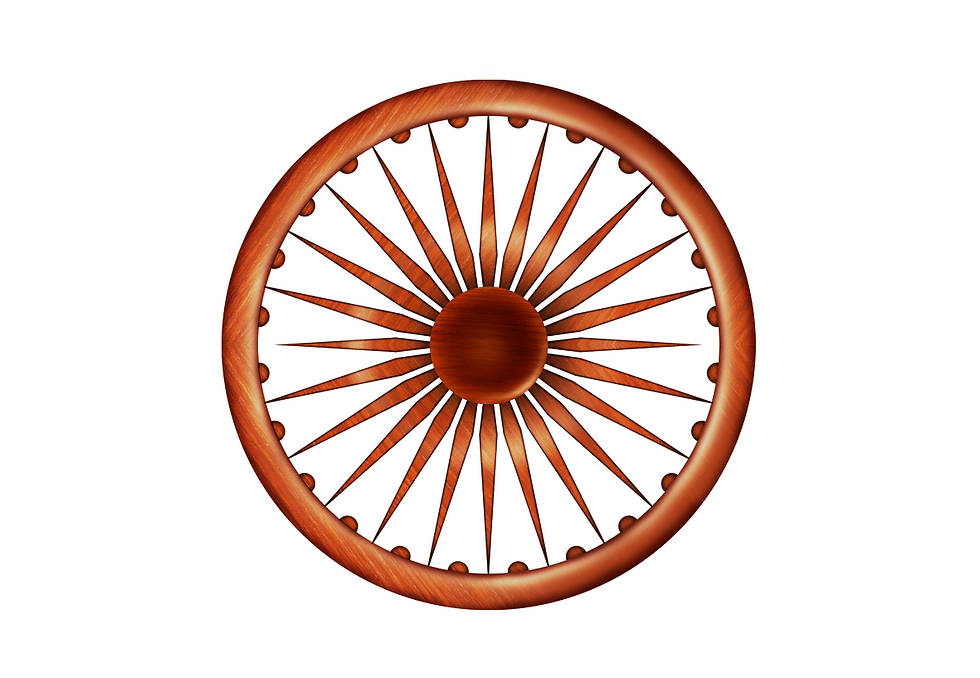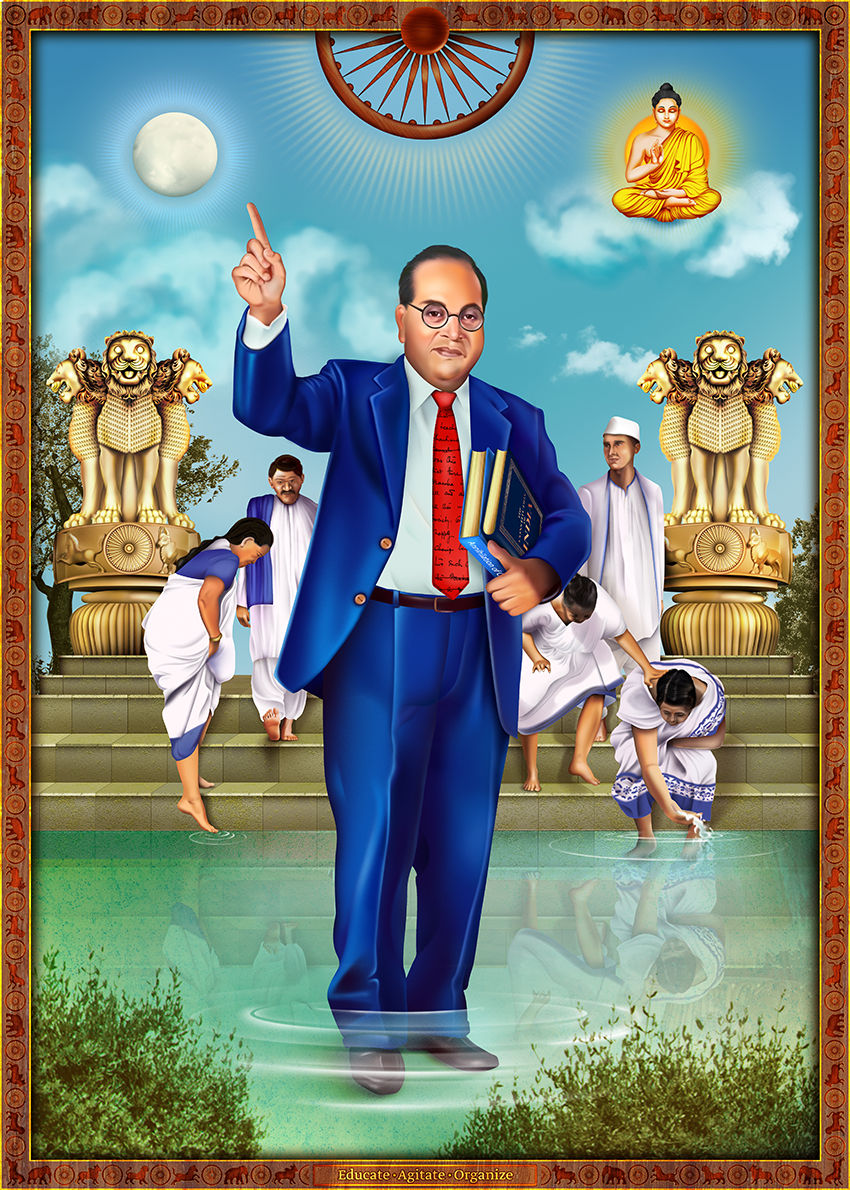1891–1956
मेरा जीवन संघर्ष ही मेरा संदेश है
“My life struggle is my message”
Bhīmrāo Rāmjī Āmbēḍkar



Dr. Ambedkar, also known as Babasaheb (Respected Father), was an economist, lawyer, and professor. He was the first Law Minister of independent India and the architect of the Indian Constitution. Above all, he was a courageous social leader who challenged the religious and social constraints into which he was born. Despite being told he belonged to an 'impure' untouchable caste (Mahar) and was forbidden from accessing water bodies, excelling in class, learning Sanskrit, or even walking upright, he defied these restrictions. Ambedkar became the first Dalit to attend college, the first Indian to earn a doctorate abroad (from Columbia University), and even gained profound knowledge of ancient Indian scriptures.
-
In the painting:
The painting depicts Ambedkar during the famous Mahad Satyagraha on 20 March 1927, where thousands of Dalits defied social restrictions to claim their right to drink water.
Water was a central issue in Ambedkar's fight against caste discrimination, as untouchable castes were denied access to public sources. His childhood experiences highlighted this injustice, leading him to organise the march that became a landmark protest for caste equality. In the painting, he is immersed in the water, emphasising the grand achievements of his socio-religious struggle.
Ambedkar’s Western suits reflected his education and rejection of socio-religious norms. The blue colour became the symbol of the resistance movement, representing the vast, impartial sky—an emblem of equality for all.
In this painting, Ambedkar's hand points upward to the moon, a Buddhist sign of enlightenment, guiding others towards liberation from caste oppression. His strength lay in his clarity—seeing through the illusion of social divisions and demanding true equality. Through his struggles, wisdom, and writings, he illuminated the path of justice and inspired millions to follow.
Ambedkar is often depicted holding the Indian Constitution, but in this painting, he also holds The Annihilation of Caste, his radical critique of the caste system.
On the tie, there is Ambedkar's handwriting, as he wrote and studied throughout his life. Education was the key to Ambedkar's liberation, and he believed in the transformative power of learning:
“Education is what makes a person fearless, teaches the value of unity, raises awareness of rights, and inspires the struggle to claim those rights.”
Ambedkar earned several degrees, including a PhD from Columbia University and a DSc from the London School of Economics. He also studied law at Gray's Inn and became one of the most highly educated leaders of his time.
The Ashoka Pillars, inscribed with edicts on non-violence and justice, carried Emperor Ashoka’s vision of Dharma across South Asia. Ambedkar saw Ashoka’s governance as a model for a just and inclusive India. Thus, the iconic Lion Capital of Ashoka were adopted as India’s national emblem, symbolising the nation's ideals of unity, peace, and ethical governance.
The Buddhist Dharma Chakra, or Ashoka Chakra, shines like the sun over the painting, emphasising righteousness, justice, non-violence, and ethical governance rooted in India's ancient heritage. Ambedkar was part of the committee that replaced Gandhi’s spinning wheel with the Ashoka Chakra at the centre of India's national flag in 1947.
On the left side of the painting, the Buddha serves as a reminder of Ambedkar's conversion to Buddhism, which led a mass movement of Dalits towards a faith he saw as rational, humanistic, and rooted in equality in 1956. Ambedkar's enlightenment was not personal but collective—like a Bodhisattva, he sought to free others from oppression. Today, his legacy is honoured alongside the Buddha in temples across India.
For the full research download this PDF (coming soon)
